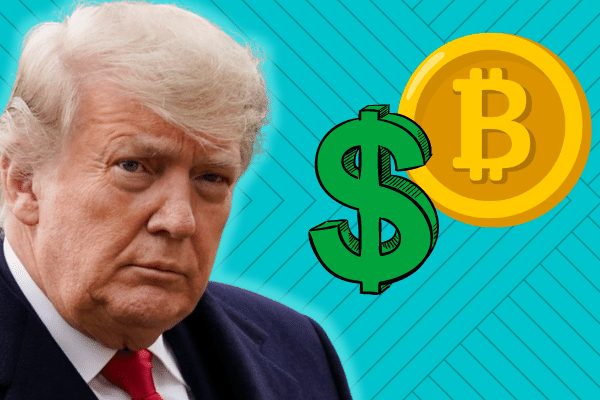
The US vs. China feud cannot be explained in simple terms, encompassing issues over a wide spectrum comprising political, economic and sometimes even social and humanitarian disagreements. Russia was the US’ largest contender previously, and China is certainly its most remarkable opponent at present, one that the hegemonic power has tried repeatedly to safeguard itself against.
Be it economic sanctions, smear campaigns or diplomatic fallouts, both countries are constantly exchanging blows on both new and old battlefields. The latest one revolves around the creation, adoption and distribution of a central bank digital currency (CBDC). A majority of governments and central banks have begun research, design and trial implementations of their very own CBDC, but the most anticipated and noteworthy ones are inarguably the prospect of a digital USD and digital yuan.
In this new fight for economic and monetary supremacy, the question is: Who will make the first foray into widespread CBDC mass adoption, and succeed in doing so?
Several crucial aspects come into play when determining the eventual winner of the CBDC race, and here is how each of these factors matter.
The Role of Government & Industry Leaders
The commitment to CBDC development is a nationwide undertaking. This means that the country’s leaders, not only central banks or financial institutions, and also other prominent leaders and advocates need to be on the same CBDC boat. It is not sufficient for the bank to simply push out a CBDC in silo; there needs to be visible and apparent support for the innovation of money and adoption of digital currencies for this to truly work.
China president Xi Jinping went on record this week at the virtual G20 Summit and urged his fellow G20 leaders to join hands in CBDC development. Xi has been rather vocal in the quest to remodel China’s economic system with the digital yuan, and finds that it is crucial that the world’s leaders identify a standardized set of guidelines to facilitate digital currency innovation. Comparatively, US leadership on the CBDC front has been largely non-existent, and digital currencies still remain a foreign concept to a majority of US citizens.
Speed of Implementation
In any major race, speed is often one of, if not the most, important factor in coming out first at the finish line, and the CBDC race is no exception.
China has an advantage in this aspect as compared to the US, as it was one of CBDC’s earliest adopters and began design and conceptualization of a digital yuan as early as November last year. In fact, China’s journey with a digital currency began way back in 2014 with the founding of China’s Digital Currency Research Institute. Its current progress can be said to be the fruit of six years worth of labour.
In contrast, the US only considered the idea of a digital dollar seriously in the third quarter of 2020, where Federal Reserve chairman Jerome Powell stated that the Fed is certainly following up with this new technological plane in finance, but to date, no concrete actions have been taken. At the very least, the Fed has not disclosed any details on a digital dollar implementation, not even as a part of a testing phase.
The exchange rate for the US dollar has fluctuated significantly in the wake of the consequences of the COVID-19 pandemic, and was dealt an even greater blow with the political uncertainty that came about during the height of the 2020 US elections. Disagreements on stimulus packages and US monetary policies are threatening the hegemonic status of the US dollar, and while the USD is unlikely to fall anytime soon, several banks and research institutes, such as the Deutsche Bank, have averred that the USD could lose out to its competitors later, especially with the digital yuan launch in the horizon.
It does not help that China is speeding ahead in multiple trials and large-scale tests concurrently at present to ensure that the digital yuan, or DCEP, survives stress tests and is improved to its optimal condition before an official rollout.
China has not only moved on from the research, design and conceptualization phase, but has tested it across four major cities and found thousands of potential use cases for the digital yuan. An app has already been created for the transfer and storage of digital yuan, and citizens were also allowed to test the DCEP at actual merchants in stores. Most recently, China is intending to embark on a second round of DCEP lottery rewards to its citizens in another city, after a successful first lottery experiment carried out in Shenzhen back in October.
The US does not seem keen on moving ahead with a digital currency for now despite acknowledging the necessity of innovations in traditional money and payments. The Fed stepped forward a few months back to announce that the private sector has no part to play in the creation of a CBDC, which should be reserved solely for a country’s central bank. This was after two well-known financial firms in the market proposed a Digital Dollar whitepaper, detailing what a digital dollar could possibly look like in the future.
On the other hand, speed is not the only deciding factor in CBDC development as implementation of a CBDC would mean restructuring a country’s economic and financial ecosystems as we know it to a certain extent. Not an initiative to be taken lightly, there are certainly variegated layers of complexity with every moving part of a CBDC plan. However, it is precisely because the process can be drawn-out that it is prudent to start as early as possible, rather than leave it for when it is too late.
It seems that with every milestone marked for China’s DCEP, the US is finally feeling the heat, and for good reason. According to the Washington Examiner, the Director of National Intelligence John Ratcliffe supposedly voiced his concerns over China’s DCEP to current Securities and Exchange Commission (SEC) Chairman Jay Clayton. He posited that the rise of the DCEP would threaten the competitive edge of US companies and the innovations sector in general.
“Competing with China is a serious enough challenge without U.S. regulators getting in the way, our regulatory regime must support American innovation, otherwise American companies are going to be put at such a profound competitive disadvantage that we could permanently lose this race,” said an intelligence officer.
Design & Adaptability
Not all CBDCs are created equally and for the same reasons. Earlier in the year, the Bank of International Settlements (BIS) and World Economic Forum (WEF) both stated at different points that not all countries should rush into CBDC creation and implementation. The WEF in particular came up with a brief, standardized guidebook to facilitate countries and banks into conceptualizing their unique digital currencies, if applicable. This is because CBDCs are likely to be more effective in one type of economy, but not others, and it is important to distinguish the features of a country’s economy at present before deciding if a CBDC is suitable, and if so, what form it should take thereafter.
For example, while every major country is deep in the depths of CBDC creation, Australia and Norway are two countries which have decided that digital currency use and adoption is not as pressing of an issue yet. Other countries such as Thailand have decided to move forward with digital currency but only at an institutional level in its initial phases, rather than for retail use.
Not only must the design of a CBDC be appropriate and target towards the current conditions of a country’s economy, it must also be malleable enough to be used across different aspects of life. In terms of business, a digital currency should be easy to implement and use across different industries and pillars, while citizens and individuals should be able to easily adopt and spend digital currencies in their everyday lives.
The US has not released a digital dollar trial phase for citizen participation currently, but China has been persistent on this path. More than 6000 use cases were discovered across industries and services during the first large-scale DCEP test, and more are being discovered as the trial proceeds.
Citizen Receptivity to CBDC Use
That being said, it is also prudent to keep in mind that what the government and banks think may work, the citizens may not. A CBDC design should be structured around the people or entities using the digital currency, and the satisfaction of these groups of users is what underpins the success of a CBDC. It would be for naught if governments and central monetary authorities poured an immense amount of resources into CBDC creation and trials, only for citizens to drop the use of digital currencies a week, a month or a year into its implementation.
Nowhere else has this been more evident than in China with its first DCEP lottery trial in Shenzhen’s Luohu District. Red packets of approximately 30 USD worth of DCEP were given to lottery winners to spend at affiliated merchants over the course of a week, and while the success of this experiment gained international praise, ground sentiments painted a different picture.
Citizens were not convinced that the DCEP wallet was any easier to use than the ones provided by WeChat or AliPay, and how digital currency use differs from the use of renminbi in digital or online transactions. There was a consensus that the DCEP would need to make a better pitch in order to garner the support of citizens, and this feedback is crucial in ensuring that the final version of DCEP is widely accepted by its citizens.
Financial & Digital Currency Regulations
Regulatory clarity has been said to go a long way in advancing the progress of the cryptocurrency and finance industries. Only when the rules and regulations are clearly set can businesses, organizations and entities safely move forward. When applying this to China and the US, China has proceeded with CBDC development under clear regulations that allows for the digital yuan to flourish within China.
On the other hand, US regulations have been largely vague and authorities have not shown great inclination towards setting appropriate and clear boundaries in place. According to Decrypt, there will be certain “regulatory upheaval” if the US wants to catch up with China in the race, while current regulations that were put in place to protect consumers have inadvertently become “unnecessary burdens” on Americans to “access global capital”.
—
Determining the winner of the race is definitely not as clear-cut as it may seem, and speed is not the only key factor. China’s current advantage in terms of its stage of progress and the accumulated experience it has with CBDC development certainly puts it in the leading position globally, but it would be a close race should the US be driven to take CBDC adoption seriously in the near future.


